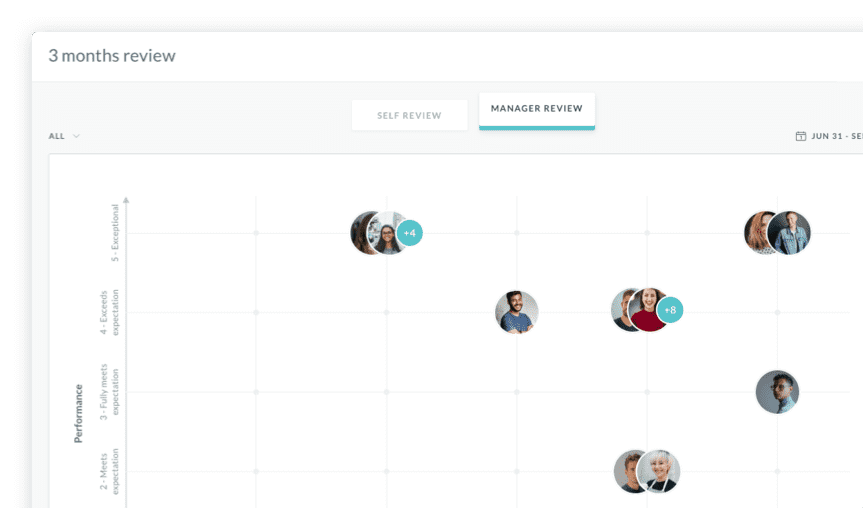Technology has improved our work culture and helped us perform tasks faster. Earlier, we used to check the resume of potential candidates manually. Instead, we just need to scan them through a resume parser like Affinda’s software. In the same way, we also track employee performance management to identify the performance of a particular employee.
Performance reviews have been a standard fixture in evaluating how to improve employee management. However, the traditional yearly appraisals are seen to have less impact on an organization. This is because they are seen as if they are subject to bias and make management and feedback a yearly event. However, performance reviews are not necessarily supposed to have the same effect. They are seen as opportunities to grow and good data sources for business development and employee engagement. In addition, it also makes employees satisfied with their job.
What is performance management?
Performance management can be defined as a process that helps effectively manage different personalities in the workplace to optimize organizational performance. Performance management ensures that employees meet their set goals and perform their tasks to the best of their ability. However, performance management is effective when employees are informed and familiar with the organization's review process. This makes it easier for them to get feedback from supervisors or the human resource department without feeling criticized. Employee management usually happens in many phases. This article explores the stages that make performance management better.
1. Planning
Planning is the most crucial stage when it comes to effective performance management. Planning usually involves blending business values and goals with that of the organization with those of the employees. When planning for performance management and reviews, one can consider independent development plans or job descriptions. Using these two tools, one can get clarified on any work assigned to employees and helps to avoid any confusion. When using a job description, direct supervisors or human resource managers can update the job descriptions after a periodical performance review. This makes the job description up to date and reflects on the current roles and responsibilities assigned.
2. Action
The action stage is usually handled by the employees, management, and people involved in the business's day-to-day operations. This is done through the independent development plans, used as a framework for everyone when priorities and achievements are reviewed. During the action stage, the main activities usually involve onboarding, opportunities for improvement, additional educational opportunities, and career development.

3. Monitoring and tracking
Technology has made it easier to evaluate, monitor, and track the performance of people working in an organization. One way to achieve this is by using analytical software to monitor everyone's activities within the business. Monitoring and tracking provide a way of keeping a record of the achievements and areas an employee is supposed to work on. This includes the achievements the employee has made within the review time frame, the areas where they require employee feedback to improve themselves and expanding or reducing their job descriptions as they need to grow or improve on their work output. Corporations and business owners usually use the data extracted from these tools to analyze the workforce. It provides an opportunity to mark weak areas employees can improve on. It also allows organizations to find solutions to human resource problems they might be facing and strategize their workforce goals. An excellent way to improve the data is by integrating data with workforce analytics to give better feedback and review the presented data.
4. Review
For proper performance review, it is not enough to hold an annual review session only. It is crucial to have regular review sessions with your employees to share and exchange feedback on performance measures. This creates a better performance insight framework for the business. For instance, one can choose to have weekly or quarterly employee feedback sessions to review employee development in the business. With a proper review framework, one can easily reward and recognize employees. However, most businesses use four strategies for management: monitoring, planning, rating, and rewarding. Each method has been known to exhibit very strong results and provide frameworks to improve the quality of output for employees and management every time.
Conclusion
Performance management serves as one of the best ways of ensuring that a business develops. In addition, it gives employees a perfect avenue to exchange ideas with their direct superiors and receive continuous feedback on their job performance. It also provides an avenue for employees to feel satisfied and knows that they are valued in the business they are taking part in. Without proper employment management structures and review performance, employers can't relay feedback that is directly aligned with the business goals of the company. How do you track your employee’s performance? What process do you use to review your employees' performance? Please share with us in the comment section.
About Author: Lori Wade is a journalist and content writer from Louisville. Lori creates news and informative articles about HR, recruiting, and employee productivity. Moreover, she is part of the team working on Affinda's software.
Keep Reading
Importance of Onboarding: Purpose, Benefits, and What It Means for Your Workplace
Think about the last time you joined a new team. You had questions, maybe even doubts.
The Most Common Hiring Mistakes in the Healthcare Industry
The hiring process can be tedious in the healthcare industry, and it may be tempting to
